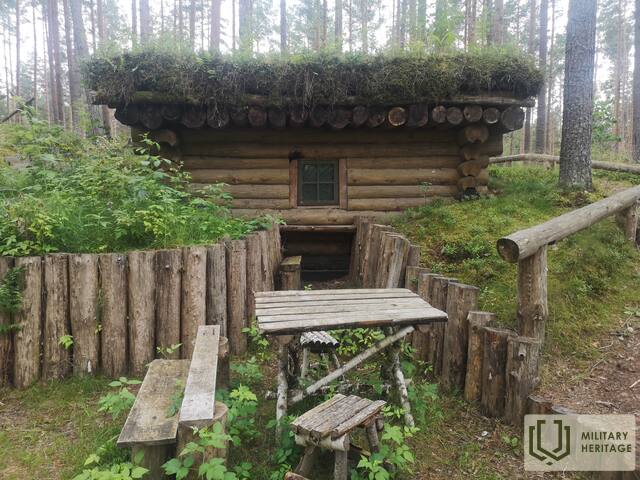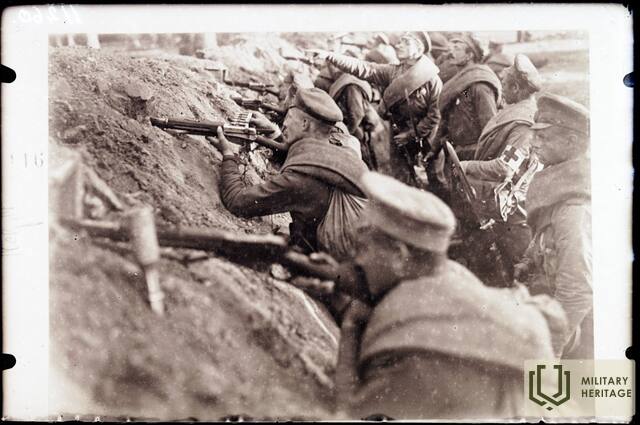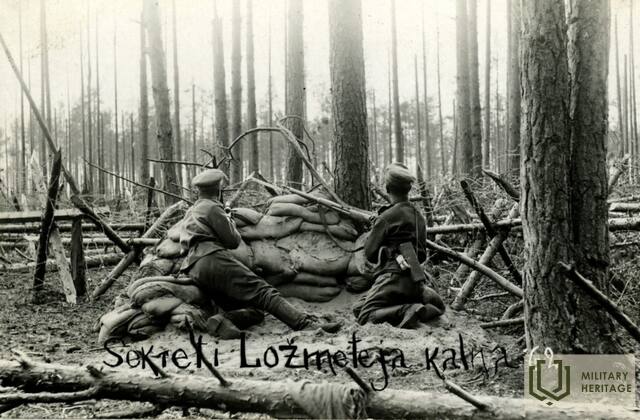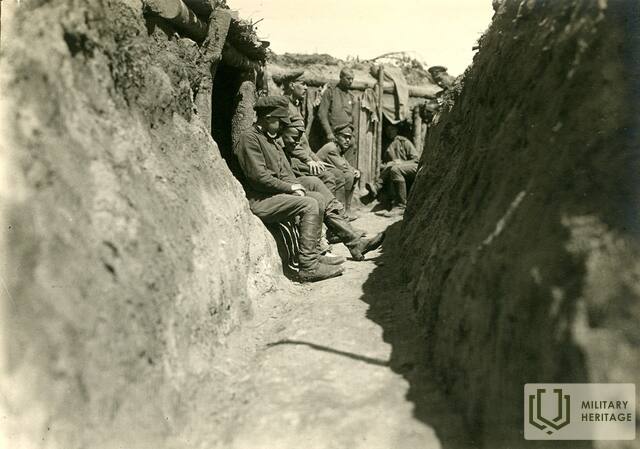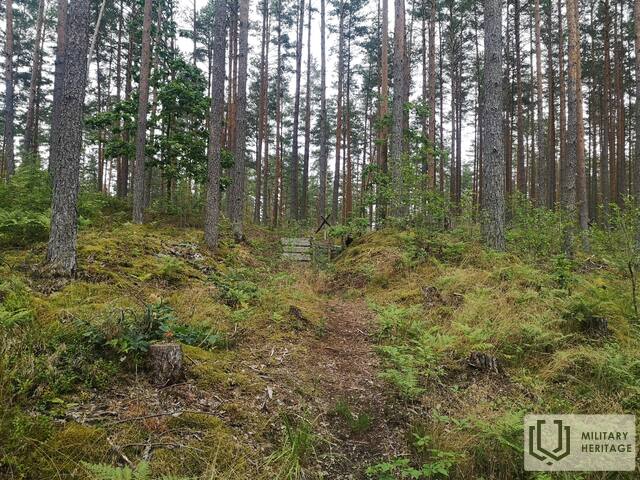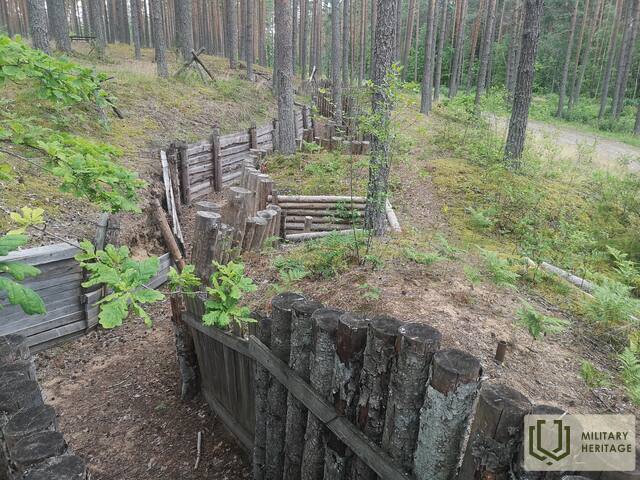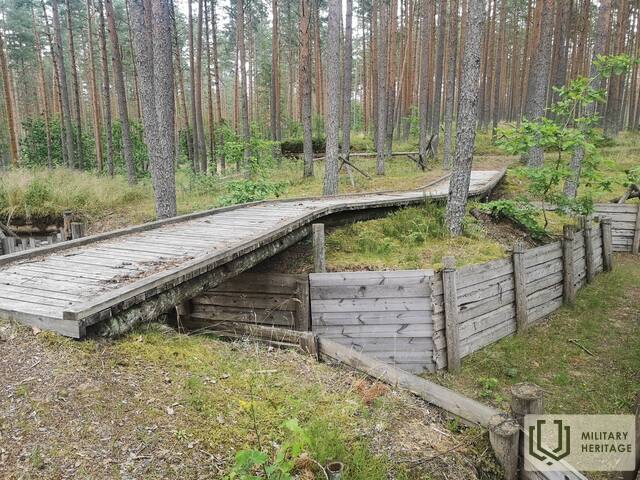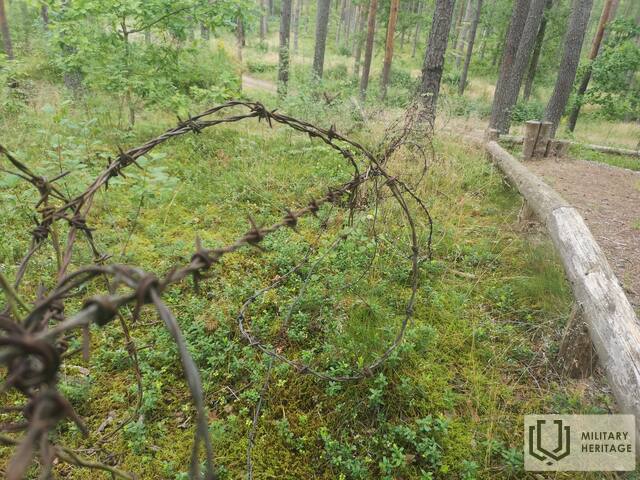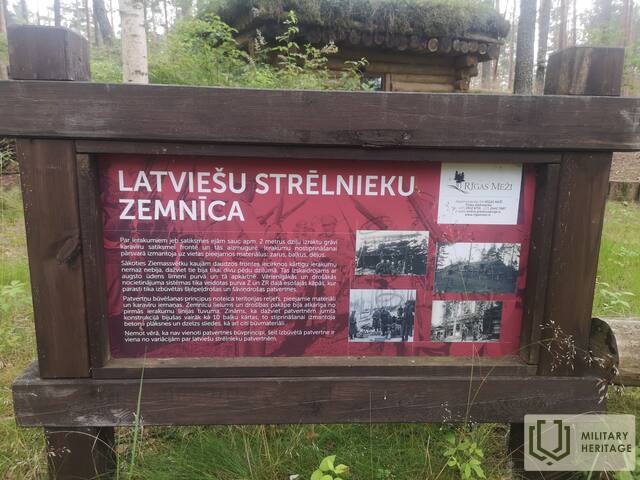Latvian riflemen positions and trenches in Tīreļi
Fortification

Latvian Riflemen dugouts and trenches in Tīreļi are located in Babīte parish, Mārupe municipality, in the vicinity of the Antiņi Latvian Riflemen Cemetery and the former medicine warehouse. During World War I this was the defensive position of Latvian Riflemen of the Russian Imperial Army. A complex of trenches and surface dugouts was built in the sandy hills. Trench or positional warfare is the best way to accurately describe World War I and emphasise the importance of fortifications. They were based on the research of military engineers and adapted to the environment and the development of new weapons. The everyday life of a soldier is a continuous improvement of defensive fortifications. Sometimes soldiers would give the dugouts names that reminded them of their homes and would help to forget about the reality of the war. Trench lines were complex defensive systems that were hard for the enemy to take. With the development of weapons these defences became even more sophisticated. The roofs of dugouts were reinforced to withstand artillery shells. Trenches were made in changing patterns and directions so that explosions would cause as little damage as possible. Movement passages had pockets that were used as short-term hiding spots during artillery fire, because they protected soldiers from shrapnel and rubble. Today part of the fortification has been restored and you can visit 3 restored dugouts and a 100 m long section of the trenches.
Used sources and references:
Vulfs, F. Rural fortification: structure. Published by the State President Čakste's Officers' Course Lectures and Translation Fund. Riga: Latvian Science and Literature, 1926.
Griffith, P. Fortifications of the Western Front: 1914-1918, Oxford: Osprey, 2004.
Related timeline
Related stories
Building defensive positions.
The description examines the problems of battlefield fortification in general. It is based on the experience of World War I and the situation when it was necessary to organize extensive work on the creation of fortifications.
A commemorative badge dedicated to Admiral Makarov was found in the yard
A small military relic can tell a vast historical story. And although the badge represents events that took place during the Russo-Japanese War, it also shows the colorful military history and the involvement of our Latvian Riflemen in other military conflicts, both before and after the Wars of Independence.




